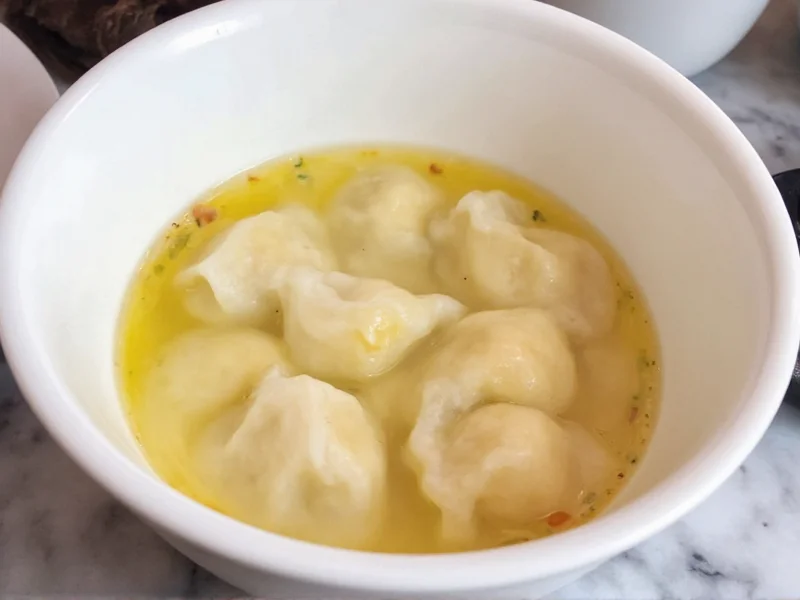Creating perfect wontons specifically for soup requires attention to detail that differs from making standalone or fried wontons. Soup wontons need to maintain their integrity while simmering in broth, delivering balanced flavor without becoming soggy or falling apart. This guide provides time-tested techniques developed through decades of perfecting Asian dumpling recipes.
Why Soup Wontons Differ From Other Wonton Preparations
Wontons destined for soup require specific considerations that don't apply to other preparations. Unlike fried wontons that benefit from thicker wrappers, soup wontons need delicate yet resilient skins that cook through quickly without becoming mushy. The filling must be formulated to withstand liquid immersion while maintaining its structure and flavor profile.
Many home cooks make the mistake of using the same wonton recipe for all applications, resulting in either disintegrated dumplings or undercooked fillings. The ideal soup wonton strikes a balance between tenderness and structural integrity that only comes from proper technique.
Essential Ingredients for Authentic Soup Wontons
The foundation of excellent wonton soup lies in carefully selected ingredients. While regional variations exist across Chinese cuisine, the following components create a balanced filling that holds up beautifully in broth:
| Ingredient | Amount | Key Purpose |
|---|---|---|
| Ground pork (20% fat) | 8 oz | Provides rich flavor base and proper texture |
| Shrimp, finely chopped | 8 oz | Adds sweetness and prevents filling from becoming dense |
| Water chestnuts, minced | 3 tbsp | Creates texture contrast and absorbs excess moisture |
| Green onions, finely sliced | 3 tbsp | Provides fresh aroma without overpowering |
| Sesame oil | 1.5 tsp | Locks in moisture and adds signature flavor |
Step-by-Step Wonton Assembly Process
Proper assembly technique determines whether your wontons will survive the soup-making process. Follow these steps for wontons that maintain their shape while delivering maximum flavor:
Preparing the Filling
Combine ground pork, chopped shrimp, minced water chestnuts, and green onions in a bowl. Add 1 teaspoon soy sauce, 1/2 teaspoon white pepper, 1/4 teaspoon sugar, and 1.5 teaspoons sesame oil. Mix vigorously in one direction for 2-3 minutes until the mixture becomes slightly sticky and cohesive. This develops the proteins that help the filling maintain structure during cooking.
Wrapper Selection and Handling
Square wonton wrappers work best for soup applications. Look for wrappers that are thin but not translucent (about 0.5mm thick). Keep unused wrappers covered with a damp cloth to prevent drying. If making homemade wrappers, use a 3:1 flour-to-water ratio with a pinch of salt for optimal soup performance.
Folding Technique for Soup Wontons
The classic 'simple bundle' fold creates the ideal shape for soup:
- Place 1 teaspoon filling in the center of a wrapper
- Fold wrapper diagonally to form a triangle, pressing out air pockets
- Moisten the two longer corners with water
- Bring corners together and press firmly to seal
- Ensure no filling is exposed at the seams
This method creates a compact shape that minimizes surface area exposed to broth while maintaining structural integrity. Avoid overfilling, which causes bursting during cooking.
Perfect Cooking Technique for Soup Integration
How you cook wontons for soup differs significantly from other preparations. Follow these guidelines for flawless results:
- Never pre-cook wontons separately - add them directly to simmering broth
- Maintain a gentle simmer (180-190°F), not a rolling boil
- Cook for 3-4 minutes after they float to the surface
- Use a slotted spoon to remove immediately when done
- Overcooking by even 30 seconds causes wrappers to become mushy
The broth should be flavorful but not overly salty, as the wontons will absorb seasoning during cooking. A clear chicken or pork broth base with ginger and scallions provides the perfect canvas for the wontons' delicate flavor.
Common Mistakes That Ruin Soup Wontons
Even experienced cooks make these critical errors when preparing wontons specifically for soup:
- Using round dumpling wrappers - square wrappers create better structural integrity for soup
- Overfilling with moist ingredients - excess liquid causes bursting (water chestnuts help absorb moisture)
- Insufficient sealing - improper sealing leads to unraveling in broth
- Cooking in vigorously boiling broth - gentle simmer preserves delicate wrappers
- Adding wontons too early - they should be the last component added before serving
Regional Variations Worth Trying
While Cantonese-style wontons dominate Western interpretations, several regional variations work beautifully in soup:
- Sichuan wontons - add 1/2 teaspoon chili oil and 1/4 teaspoon Sichuan pepper to filling for spicy broth applications
- Shanghai-style - incorporate 1 tablespoon pork fat into filling for richer mouthfeel
- Vietnamese variations - substitute shrimp for all pork and add fish sauce to filling
- Vegetarian option - use shiitake mushrooms, tofu, and bamboo shoots with extra water chestnuts
Storage and Freezing Techniques
Properly frozen wontons maintain quality for up to 3 months. For best results:
- Arrange uncooked wontons on parchment-lined baking sheet
- Flash freeze for 1 hour until firm
- Transfer to airtight container with parchment between layers
- To cook from frozen, add 1-2 minutes to cooking time
- Never thaw before cooking - adds moisture that weakens wrappers
Freezing uncooked wontons preserves texture better than freezing cooked ones. The flash-freezing step prevents sticking and maintains shape integrity.
Troubleshooting Guide
When problems arise with your soup wontons, these solutions typically resolve common issues:
- Bursting during cooking: Reduce filling amount, ensure no air pockets, and check wrapper quality
- Mushy texture: Shorten cooking time, use higher quality wrappers, or reduce broth temperature
- Filling too dense: Increase shrimp ratio, add more water chestnuts, or incorporate beaten egg white
- Wrappers sticking together: Dust lightly with cornstarch before stacking, but avoid excess
- Flavorless filling: Increase seasoning by 25%, add more green onions, or incorporate shrimp roe











 浙公网安备
33010002000092号
浙公网安备
33010002000092号 浙B2-20120091-4
浙B2-20120091-4